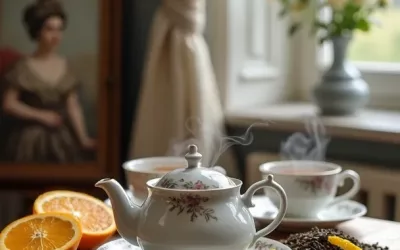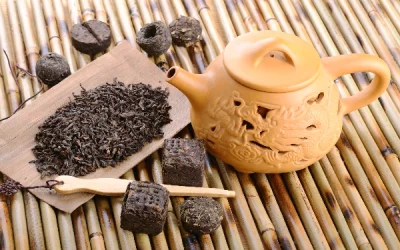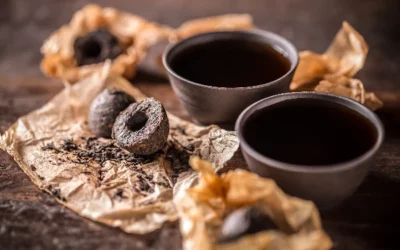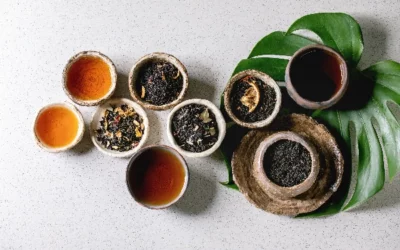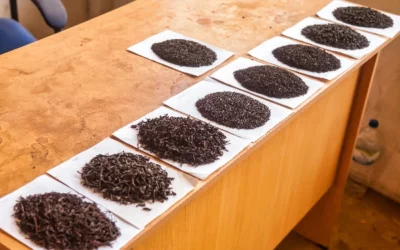Did you know that Earl Grey tea is not just a delightful beverage but also a cultural icon steeped in history? This unique blend, mainly comprising black tea infused with bergamot oil, offers more than just a fragrant cup—it’s a symbol of elegance and tradition. In this article, we’ll explore everything you need to know about Earl Grey tea, from its intriguing origins to its varied forms, health benefits, and the perfect brewing techniques. Join us as we uncover the rich tapestry of Earl Grey, ensuring you enjoy every sip to the fullest!
Table of Content
What is Earl Grey tea?
Earl Grey tea is a distinctive and beloved type of flavoured tea known for its citrusy hint that comes from bergamot oil. This tea combines the richness of black tea with the aromatic essence of bergamot, creating a unique blend that is both refreshing and invigorating.
Firstly, let’s break down what makes Earl Grey tea special. The base of this tea is usually high-quality black tea, which provides a bold and robust flavour. The star ingredient, however, is bergamot oil, which is an oil extracted from the rind of the bergamot orange, a fruit that thrives in the Mediterranean climate.
This oil gives Earl Grey its signature aroma and taste, making it enchanting to tea enthusiasts worldwide. Many tea connoisseurs find Earl Grey to be a versatile beverage, regularly enjoyed both hot and cold, and fitting for any time of the day.
What are the main ingredients of Earl Grey tea?
When it comes to understanding Earl Grey tea, it’s essential to know its main components that give it its distinct character.
- Black Tea: High-quality black tea leaves form the sturdy base of Earl Grey. These leaves offer a rich, robust flavour that is slightly astringent.
- Bergamot Oil: This citrus oil is derived from the rind of bergamot oranges, infusing the tea with a fragrant, tart essence.
- Additional Flavourings: Sometimes, blends may include hints of lavender, vanilla, or other florals to add complexity.
- Natural or Synthetic Essence: Depending on the brand, some Earl Grey teas utilise natural oils from bergamot, while others might use synthetic equivalents.
These ingredients come together to create a tea that’s not only flavourful but also aromatic.
How does bergamot oil affect the flavour?
Bergamot oil plays a crucial role in the overall experience of enjoying Earl Grey tea. It does many things that contribute to the tea’s flavour profile.
- Citrusy Aroma: It gives the tea its distinctive, fragrant citrus scent, which many find invigorating and uplifting.
- Balanced Flavour: The oil adds a tart, fruity note that complements the boldness of black tea, making each sip both refreshing and complex.
- Astringent Tone: Bergamot oil offers a bit of a dry, tangy finish that leaves a pleasant aftertaste.
- Refreshing Touch: The citrus element tends to make the tea feel lighter and more refreshing, ideal for both morning and afternoon breaks.
Without bergamot, Earl Grey would lack its recognizable zest and aromatic qualities, transforming it from an ordinary tea to something rather extraordinary.
Why is Earl Grey tea culturally significant?
Earl Grey tea holds a special place in various cultures, and its significance stretches beyond just being a popular drink.
- Named After a Historical Figure: The tea is named after Charles Grey, 2nd Earl Grey, who served as Prime Minister of Britain in the 1830s.
- Symbol of Elegance: Often associated with refinement and high society, Earl Grey tea commonly appears in afternoon teas and sophisticated gatherings.
- Literary References: The tea often finds mentions in literature, signifying its longstanding cultural relevance.
- Global Popularity: Earl Grey tea has fans not just in Britain but all around the world, marking its transition from a domestic staple to a global classic.
- Versatile Usage: It’s used in a variety of culinary applications, including desserts, cocktails, and scented products, showcasing its versatility beyond a simple beverage.
Understanding the cultural backdrop of Earl Grey tea adds another layer to its appeal, making it a drink rich in history and stories.
In the early 19th century, an interesting development occurred when Charles Grey, the Prime Minister, reportedly received a diplomatic gift of bergamot-flavoured tea. According to legend, a Chinese mandarin had given it to Grey as a token of gratitude for saving his son. While the story’s authenticity may be questionable, it certainly adds an air of mystery and romance around the tea.
Speaking of personal connections, I remember my first sip of Earl Grey during a vacation in the Lake District. Sitting in a quaint teahouse, the aroma of bergamot washing over me was like a comforting hug. That initial encounter made such an impression that I started including Earl Grey in my daily routine, making it my go-to pick-me-up beverage.
How is Earl Grey tea made?
Earl Grey tea, renowned for its distinctive flavour and aroma, holds a special place in the world of teas. The production process is meticulous and involves several steps to ensure the quality and taste Earl Grey is known for. Let’s delve into the process and understand how this iconic tea comes to life.
The journey of Earl Grey tea begins with careful sourcing of the finest tea leaves. Combining these leaves with the right amount of bergamot oil or essence creates the signature flavour that enthusiasts adore. Below, you will find a
| Step Number | Description of the Step | Key Considerations |
|---|---|---|
| 1 | Sourcing the Tea Leaves | Quality of leaves, origin, and freshness |
| 2 | Withering | Duration and control of moisture loss |
| 3 | Rolling | Shape and integrity of the leaves |
| 4 | Oxidation | Duration and temperature control |
| 5 | Blending with Bergamot | Proportion of bergamot oil and mixing technique |
| 6 | Drying | Preserving flavour and preventing moisture |
| 7 | Packaging | Airtight sealing and maintaining freshness |
that details each step involved in crafting this beloved tea. Use the table to see how each phase looks, and note the key elements considered during each stage.
The production of Earl Grey tea is a beautiful dance of tradition and precision. Each step – from selecting the best leaves to perfectly blending with bergamot – ensures the tea delights your senses with every sip.
What is the history of Earl Grey tea?
Our connection with Earl Grey tea reaches back to the 19th century. The tea is purportedly named after Charles Grey, the 2nd Earl Grey, who was British Prime Minister from 1830 to 1834. The blend was a gift to him, and he later popularised it.
- Origins: Named after Charles Grey.
- Introduction: Popularised in the UK during the 19th century.
- Ingredients: Traditional black tea and bergamot oil.
- First Blenders: The creators remain unknown, though Twinings and Jacksons claim early versions.
- Cultural Significance: Firmly rooted in British tea culture.
This iconic tea became a symbol of sophistication and refinement, often enjoyed during afternoon tea sessions or social gatherings.
What are the various blends of Earl Grey tea?
Earl Grey tea has evolved over time, giving rise to several delightful variations. Each blend offers a unique experience while maintaining the essence of the original tea.
- Classic Earl Grey: Traditional black tea with bergamot.
- Lady Grey: A milder version with added lemon and orange peel.
- Earl Green: Uses green tea instead of black tea.
- Rooibos Earl Grey: Made from rooibos leaves, caffeine-free.
- Earl Grey with Lavender: Infuses lavender for a floral twist.
Blenders experiment with different teas and flavours to create these unique blends. Each variant provides a distinct yet familiar tasting experience, ensuring there’s an Earl Grey for every palate.
During the 19th century, a tea broker named Richard Twining presented a unique blend of tea to Earl Charles Grey. According to legend, this blend was a thank-you gift for saving a Chinese mandarin’s son from drowning. Twinings created what we now know as Earl Grey after perfecting this blend with bergamot. They never anticipated the sweeping popularity.
As a tea enthusiast, I’ve journeyed through countless flavours and blends. Earl Grey stands out due to its rich aroma and robust taste. I remember sipping it at a local café on a chilly afternoon. The warmth and citrusy notes instantly lifted my spirits. It wasn’t just tea; it was an experience, a blend of history, and tradition in a cup. Every time I brew Earl Grey, I am reminded of that comforting moment.
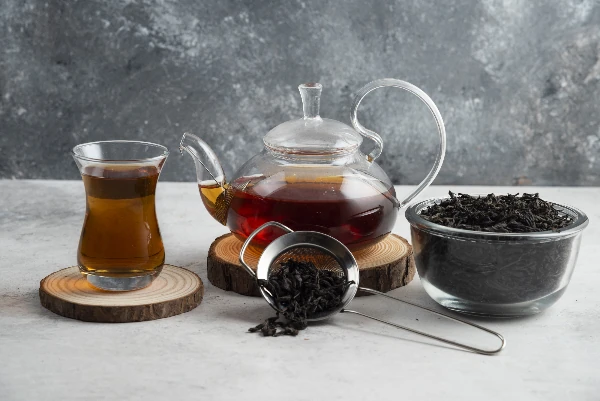
What are the variations of Earl Grey tea?
Earl Grey tea might seem like just another posh tea blend, but there’s so much more to it than just bergamot flavouring. There’s a whole world of variations that can tickle your taste buds in surprising ways. Ready to dive in? Let’s break down some of the more intriguing versions: Lady Grey, Russian Earl Grey, Green Earl Grey, Earl Grey Creme, and Vanilla Earl Grey.
Earl Grey, as we know it today, typically features black tea blended with the oil from the rind of bergamot orange, giving it that unique citrusy aroma. However, adventurers in the tea world have not stopped there. Each variation adds a twist, making each sip a new experience. Spilling tea has never been this classy.
What distinguishes Lady Grey from traditional Earl Grey?
Lady Grey isn’t just Earl Grey with a fancy hat on. It’s got its own pizzazz. Just think of it as Earl Grey’s more delicate and floral cousin. It retains the iconic bergamot but mixes things up with additional citrus peel, like lemon and orange, making it lighter and fruitier. Perfect for those days when you want to feel fancy without being too bold.
- Citrus Peel: Added lemon and orange zest give it a sweeter, more rounded flavour.
- Lighter Brew: Less astringent and heavy compared to the classic version.
- Floral Notes: Slightly more floral, making it a gentler option.
- Great for Iced Tea: Perfect for a refreshing sip on a hot day.
- Evening Tea: Ideal for a lighter afternoon or evening tea session.
So, if you’re feeling like Earl Grey but craving something that doesn’t punch quite as hard, Lady Grey is your go-to.
What additional flavours are found in Russian Earl Grey?
Russian Earl Grey takes the original, gives it a Russian twist, and throws in some exotic extras. Imagine standing in a vibrant spice market with your favourite bergamot infusion. It’s like a tea party in your cup with some added layers of unique flavours.
- Citrus Fruits: Beyond bergamot, expect hints of lemongrass and orange.
- Spices: Nuances of smoky and spicy notes, think along the lines of star anise.
- Sweetness: Often has a sweeter profile, making it a cosy, comforting choice.
- Earthy Undertones: May include added herbs or earthy flavours.
- Rich Aroma: A bolder scent, perfect for those who like their tea with a bit of drama.
Russian Earl Grey is essentially for those who find the standard one a bit too tame. It promises and delivers a roller-coaster of flavours.
How does Green Earl Grey differ in taste?
Green Earl Grey is like the love child of your standard black Earl Grey and a green tea fanatic. It switches out the black tea leaves for green ones, keeping that delightful bergamot twist, but the result is a much fresher and lighter brew.
- Mild Flavour: Less intense than black tea, offering a more subtle base.
- Smooth Texture: A cleaner, more refined mouthfeel.
- Vegetal Notes: Slightly grassy and crisp, typical of green tea.
- Lower Caffeine: Perfect if you want to cut down on your caffeine intake.
- Refreshing: More refreshing than heavy, ideal for green tea aficionados.
Feeling health-conscious or just in the mood for something lighter? Green Earl Grey is your knight in shining, leafy armour.
In the 1830s, Earl Charles Grey himself received a gift of blended tea from a Chinese envoy, leading to the modern Earl Grey we adore. But here’s the kicker: the original blend’s secret weapon was actually a mix designed to overcome the taste of hard water at the Grey estate. So next time you sip on your Earl Grey variation, imagine it as a solution to an old British aristocratic problem, and maybe, just maybe, you’ll feel a bit more posh.
What is the history of Earl Grey tea?
Earl Grey tea, known for its distinctive bergamot flavour, carries with it a fascinating history intertwined with British tea culture. At the heart of this story is Charles Grey, the 2nd Earl Grey, and a whirlwind of tea trade developments during the 19th century. With the Victorian era playing a pivotal role, let’s dive into the origins and evolution of this iconic brew.
Earl Grey tea gets its name from Charles Grey, the 2nd Earl Grey. Grey was a British Prime Minister in the early 19th century, known not just for his political feats but also for his unexpected contribution to tea. Legend has it that a Chinese Mandarin presented Grey with a gift of tea flavoured with bergamot oil. Perhaps an early version of “doctored tea”? Politicians do need their caffeine kicks. Anyway, Grey allegedly liked the blend so much that he requested Twinings to replicate it, thus birthing what we now know as Earl Grey tea.
The 19th century was a busy time for the tea trade. British merchants were traversing the globe, bringing back exotic flavours and spices. The East India Company, that juggernaut of trade tyranny, played a crucial role in importing massive quantities of tea into Britain. Among these shipments was the celebrated bergamot-infused tea, which gained popularity rapidly. The combination of widespread trade routes and adventurous palates meant that Earl Grey quickly became a staple.
The Victorian era, an age of remarkable growth and change in Britain, coincided with the rise of tea-drinking culture. Afternoon tea became not just a ritual but a societal norm, the ultimate way to show off one’s refined tastes. Earl Grey, with its unique aroma and flavour, became the darling of these gatherings. The Victorians, ever fond of their novelties and luxuries, embraced this flavoured tea with open arms, solidifying its place in British culture.
Who was Charles Grey and how did he influence tea?
Charles Grey, the 2nd Earl Grey, was more than just a name on a tea packet. He served as Britain’s Prime Minister from 1830 to 1834. Known for pivotal reforms like the abolition of slavery and parliamentary reform, Grey also left an accidental legacy in the world of tea. Without his fondness for bergamot, Earl Grey tea might never have existed.
- Reformer: Grey pushed for the Reform Act 1832, granting broader voting rights.
- Tea Enthusiast: He’s credited with popularising bergamot-flavoured tea.
- Abolitionist: Advocated for the abolition of slavery across the British Empire.
- Namesake: Earl Grey tea officially carries his name.
- Legacy: Left a dual legacy in politics and tea culture.
The 2nd Earl Grey was not just a political figure but also a harbinger of refined tastes. His impact on tea culture exemplifies how a penchant for a particular flavour can transcend personal preference and influence a nation.
How did the tea trade impact the popularity of Earl Grey?
The tea trade was the lifeblood of Britain’s tea obsession during the 19th century. The East India Company dominated the tea market, importing teas from China, India, and Ceylon like there was no tomorrow. This surge made tea accessible and diverse.
- Volume: The East India Company imported vast quantities.
- Diversity: Different flavours and varieties became available.
- Accessibility: Tea became a household commodity.
- Luxury: Tea from far-off lands became a symbol of status.
- Bergamot: Blending tea with bergamot made Earl Grey stand out.
Earl Grey tea became an instant hit due to the booming tea trade, which brought not just the product but also the story of Chinese roots and intricate flavours to British tea tables.
What role did the Victorian era play in Earl Grey’s history?
The Victorian era was tea-tastic. This period, marked by Queen Victoria’s reign, was a time of rigorous social norms and afternoon teas. The tradition of afternoon tea started in this era, becoming a full-blown institution and a symbol of societal status.
- Social Ritual: Afternoon tea became a high-society event.
- Innovation: Flavoured teas like Earl Grey became fashionable.
- Sophistication: Drinking tea with bergamot was a sign of refined taste.
- Mass Production: Industrialisation made tea accessible to the masses.
- Cultural Integration: Tea-drinking intertwined with social norms and culture.
The Victorian era didn’t just contribute to the consumption of Earl Grey tea; it cemented it as a luxurious yet essential part of everyday life, influencing generations to come.
Speaking of societal shifts in tea-drinking customs, let’s take a hop, skip, and historical jump to Lord Frederick Cavendish. Cavendish, a Victorian-era politician and tea lover, often held elaborate tea parties. In one such gathering in 1870, the tea was interrupted by news of German unification, creating a buzz amongst the guests. The diversion proved so significant that it altered his residence policy, ensuring a dedicated tea break henceforth during all high-profile meetings. This quirky blend of serious politics and leisurely tea sessions underlined just how integral tea had become to the British way of life.
What are the health benefits of Earl Grey tea?
So, you want to know about the health perks of sipping on Earl Grey tea, huh? Well, you’re in for a treat. This delicious blend isn’t just a posh tea party staple; it’s packed with benefits that’ll have you feeling like royalty. From antioxidants to better digestion, less stress, a healthier heart, and even weight management, Earl Grey is the brew that keeps on giving.
Loaded with those good-for-you antioxidants, sipping on a cup of this fragrant tea can do wonders for your bod. And if your stomach’s been feeling like it’s in a never-ending rollercoaster, Earl Grey can come to the rescue. Plus, ever find yourself stressed out and in need of a little zen? Earl Grey has got you covered. Your heart can also thank you for swapping your regular cuppa for this citrusy delight, and if you’re mindful about your weight, well, it’s got some tricks up its sleeve too.
What antioxidants are found in Earl Grey tea?
Earl Grey isn’t just a fancy name; it’s a treasure trove of antioxidants. These tiny warriors fight off free radicals like it’s an Olympic sport, making sure your body stays in top form. Here’s what you’ll find:
- Catechins: These bad boys are also found in green tea and have potent antioxidant properties.
- Flavonoids: Not just a fun word to say, these compounds can improve your overall health.
- Tannins: Known for their astringent qualities, they also pack an antioxidant punch.
- Bergamot oil: This is the magic that gives Earl Grey its unique flavour, and it comes with antioxidant benefits too.
- Theaflavins: These are formed during the oxidation of black tea leaves and are responsible for that deep, rich taste.
Now, when you sip on Earl Grey, you’re basically arming yourself with a shield against oxidative stress. No more dull skin or lethargy. Just whizz around your day with the same charisma as the Earl himself.
How can Earl Grey tea aid digestion?
Let’s face it, nobody likes feeling bloated or gassy. Earl Grey tea can play the role of the unsung hero for your digestive system. Thanks to its unique blend of ingredients, it’s got some epic digestive properties.
- Bergamot oil: This ingredient is known to aid digestion and alleviate stomach discomfort.
- Natural polyphenols: These compounds can help reduce inflammation and improve gut health.
- Tannins: They can help soothe your stomach lining, reducing things like diarrhoea.
- Anti-inflammatory properties: Less inflammation equals happier intestines, which equals happier you.
- Mild laxative effect: This can help keep you regular without the drama of other, harsher solutions.
So, if you’re gorging on that extra slice of cake—in the name of science, obviously—and feeling the regret, Earl Grey might just be your digestive knight in shining armour.
Is there any evidence supporting Earl Grey’s role in heart health?
Oh, you bet there is! While it might not be a total miracle worker, there’s plenty of evidence to suggest Earl Grey tea is good for your ticker.
- Flavonoids: These compounds help improve circulation and lower blood pressure.
- Cholesterol reduction: Some studies have found that the polyphenols in Earl Grey can reduce LDL cholesterol levels.
- Anti-inflammatory effects: Reduced inflammation means less stress on your heart.
- Natural relaxant: Less stress equals a healthier heart. Simple math, really.
- Blood sugar regulation: Reports suggest that it can help stabilise blood sugar levels, which is beneficial for heart health.
So, next time you’re about to pour your standard black tea, consider Earl Grey instead. Your heart may just do a little happy dance in gratitude.
Back in the early 1800s, Charles, the second Earl Grey, received a diplomatic gift of tea flavoured with bergamot oil. Rumour has it, this exquisite tea was given to him by a Chinese mandarin; however, the tale is more likely tied to his political career and the new trade routes established. The Earl adored this unique blend so much that he asked British tea makers to replicate it. Today, it stands as a testament to the blend’s long-standing appeal and benefits.
So, whether you’re steeping a pot for its delightful taste or its impressive health benefits, remember you’re partaking in a tradition that’s just about as old as modern tea drinking itself.
How to brew the perfect cup of Earl Grey tea?
Alright, let’s get straight to the point. You’ve got yourself some fancy Earl Grey tea, and now you want to know how to brew it like a pro. We’re talking about maximising its iconic bergamot flavour and aroma, not just dunking a teabag into boiling water. Let’s dive into the basics: water temperature, steeping time, tea-to-water ratio, serving suggestions, and storage tips. Now, pay attention because there’s a bit more to it than just boiling some water and hoping for the best. Spoiler: it’s all about getting the details right.
What is the ideal water temperature for brewing?
Starting with the water temperature. You’re not making a cup of builder’s tea here, so dump that boiling water idea. Earl Grey tea needs a gentler touch—think spa day rather than sauna.
- Ideal Range: 90°C to 95°C (just below boiling)
- Why It Matters: Too hot and you’ll scorch those delicate leaves, turning your brew into a bitter nightmare
- Method: Boil water and let it cool for a minute before pouring it over the tea leaves
- Tools: Use a thermometer if you’re feeling fancy, or eyeball it for that “just-right” temp
How long should Earl Grey tea be steeped?
Next up, let’s talk steeping time. You want to extract all that goodness without overdoing it. The goal is to capture that floral, citrusy essence of the bergamot without unleashing the tannins that make your mouth pucker.
- Steeping Time: 3 to 5 minutes
- Watch Out For: Over-steeping turns your tea from delightful to dreadful faster than you can say “cuppa”
- Pro Tip: Start with 3 minutes, taste, and then adjust the time until you hit that sweet spot
What are some serving suggestions for Earl Grey tea?
Finally, serving suggestions. Don’t just slurp it straight from the pot, get creative. Earl Grey is posh; it deserves some flair.
- Classic Combo: A splash of milk and sugar
- Citrusy Twist: Add a slice of lemon
- Lavender Love: Enhance the floral notes with a pinch of lavender
- Chilled Pleasure: Make an iced Earl Grey with honey and a dash of vanilla
- Dessert Dream: Earl Grey tea latte—steamed milk, honey, and a sprinkle of nutmeg
Now, as delightful as all of that sounds, don’t forget about the storage. Those tea leaves hate moisture and sunlight more than a vampire, so keep your stash in an airtight container, preferably in a dark, cool place. This will ensure that every cup you brew smells like a fresh batch of bergamot heaven.
In simpler terms, the perfect Earl Grey is a dance of precise temperature, just the right steeping, and a few serving tricks up your sleeve.
How can I identify organic Earl Grey tea?
Organic tea isn’t just a buzzword; it’s the real deal for those who want to avoid pesticides and chemicals. Spotting organic Earl Grey tea is simpler than you think:
- Certified Organic Labels: Look for certification stamps from organisations like USDA or Soil Association Organic.
- Ingredient List: No strange chemicals you need a PhD to pronounce, just simple, natural ingredients.
- Reputable Brands: Brands often known for their organic selections include Numi, Traditional Medicinals, and Organic India.
- Price Point: Quality and ethics often come at a higher price. If it’s too cheap, ask yourself why.
- Reviews and Ratings: Customer reviews on sites like Amazon or specialty retailers can provide insights into authenticity.
When in doubt, a little research goes a long way in ensuring you’re getting genuine organic products.
Back in the 19th century, Charles Grey, the second Earl Grey and British Prime Minister, never experienced this kind of attention to detail. Legend has it, he received a gift of tea flavoured with bergamot oil, which he enjoyed so much that it became known as Earl Grey tea.
Imagine his surprise if he’d known that years later, people would be obsessing over the exact water temperature and steeping times. Well, the man might have had other things to worry about, like running the country, but it’s safe to say you’ve now got the tea game figured out better than he ever did!
What are some common misconceptions about Earl Grey tea?
Oh, Earl Grey tea. The tea for people who want to sound posh without actually having to be posh. But let’s cut through the fog of misconceptions that surround this classic tea blend. Spoiler: no, it won’t turn you into a Victorian gentleman. Let’s dive into some of the most persistent myths about Earl Grey tea: its caffeine content, flavour expectations, health claims, historical inaccuracies, and brewing techniques.
First off, you might be wondering if Earl Grey tea is a secret jolt of caffeine in disguise. Lurking in the back of your mind could also be some dubious claims about its health benefits. And hey, maybe you’ve butchered the brewing process once or twice. Don’t fret; we’ve all been there.
Is Earl Grey tea high in caffeine?
Let’s break it down. Earl Grey tea is essentially black tea flavoured with bergamot oil, and black tea usually contains, well, caffeine. But does that make it the caffeinated bogeyman of the tea world? Not quite.
- Caffeine Levels: A typical cup of Earl Grey contains about 40-70 mg of caffeine. For reference, a regular cup of black tea holds about the same, and coffee clocks in at around 95 mg.
- Blends and Variants: Different brands and blends may have varying levels of caffeine. So, your artisanal, hand-plucked, moon-bathed Earl Grey probably won’t give the same jolt as the generic supermarket variety.
- Amount Consumed: The caffeine content can also depend on the amount of tea leaves used and the steeping time. More leaves and longer steeping equal more caffeine.
- Herbal Versions: Some brands offer herbal, caffeine-free versions of Earl Grey, often made with rooibos or other non-caffeinated bases.
- Comparative Levels: If you’re comparing among teas, it’s lower in caffeine than a cup of green tea or matcha but, as mentioned, higher than herbal tea.
So, unless you’re knocking back Earl Grey by the litre, your caffeine intake should be within the safe zone. Enjoy it without fearing a buzz-induced meltdown.
Are there false health claims associated with Earl Grey?
Ah, health claims. The elixir of marketing departments worldwide. Earl Grey has been heralded as a miracle worker, but should you be treating it like a magic potion?
- Cardiovascular Benefits: Some claim it’s good for your heart. While black tea may help with cardiovascular health due to flavonoids, don’t expect miraculous results from your daily cuppa.
- Antioxidants: Yes, antioxidants are present, but the same can be said for most teas. It’s not the fountain of youth.
- Stress Relief: Claims of stress relief usually stem from the bergamot oil. The smell might calm you down, but don’t bet on it replacing your therapist.
- Weight Loss: It’s not a magic weight-loss potion. Earl Grey may help boost metabolism slightly, but it’s no substitute for a balanced diet and exercise.
- Immune Boosting: Some claims say it’s an immune booster, thanks to the bergamot. Take that with a grain of salt – or a slice of lemon.
So, while Earl Grey has its perks, it’s not going to turn you into Superman. Sip it for the flavour, not for the mythical health benefits.
What are some common brewing mistakes?
Alright, you’ve got your tea, and you’re ready to brew. But wait! You could be committing some cardinal sins in the world of tea brewing. Let’s make sure you’re not one of those monstrosities pouring boiling water directly onto your sacred leaves.
- Water Temperature: The water should be hot, but not boiling – about 95°C. Boiling water can make the tea bitter.
- Steeping Time: Don’t steep indefinitely. Aim for about 3-5 minutes. Over-steeping can make the tea too strong and astringent.
- Tea Quantity: Use about one teaspoon of tea leaves per cup. Too much can make the tea overpowering; too little, and it’s weak.
- Quality of Leaves: Opt for whole tea leaves rather than tea bags. Tea bags often contain lower quality leaves or fannings.
- Water Quality: Use filtered water if possible. Impurities in tap water can affect the final taste.
There you have it – no more excuses for a bad cup of tea. Brew with care, and you’ll be richly rewarded in flavour.
And speaking of historical inaccuracies, did you know Earl Charles Grey didn’t invent the tea named after him? He was actually the British Prime Minister! Legend has it, he received a gift of tea flavoured with bergamot oil as a token of gratitude. The real story might be lost in history, but one thing’s certain: Earl Grey tea has outlasted politics and generations, just like any good brew should.
Conclusion
In delving into the world of Earl Grey tea, we’ve explored not only its enticing flavour profile, rich history, and diverse variations but also its significance throughout cultures and its potential health benefits. From the delightful clash of black tea and bergamot oil that captivates the palate to the intricate production process detailed in our table, it’s clear that this beloved beverage is much more than just a drink; it’s a symbol of sophistication and a testament to its storied past.
The journey of Earl Grey tea began with Charles Grey, whose influence reshaped tea culture in the 19th century, making this blend both a staple and a luxury item among the elite. As we’ve discussed, the variations such as Lady Grey and Russian Earl Grey add further layers to its legacy, revealing how a simple infusion can be transformed into something uniquely personal. The health benefits, ranging from improved digestion to heart health, underscore the value of this tea beyond its taste and aroma, encouraging drinkers to appreciate it as a wellness companion.
Reflecting on the future, those of us who cherish Earl Grey tea might consider experimenting more boldly with brewing techniques or exploring artisanal blends from local markets. There’s a world of flavours to discover, and with the right approach, each cup can be a new adventure.
As I contemplate the wonder of Earl Grey, I’m reminded of the words of the legendary author T.S. Eliot, who once said, “Only those who will risk going too far can possibly find out how far one can go.” I encourage you, dear reader, to take the plunge, explore high-quality options, engage with different variations, and elevate your tea experience. After all, life is too short for anything less than a perfect cup of Earl Grey.
Resources
- Efficacy of bergamot: From anti-inflammatory and anti-oxidative mechanisms to clinical applications as preventive agent for cardiovascular morbidity, skin diseases, and mood alterations
- The anti-obesity effects of green tea in human intervention studies: A meta-analysis
- Therapeutic effect of high-dose green tea extract on weight reduction in women with central obesity: A randomized trial
- Citrus bergamia essential oil: from basic research to clinical application
- 10 Health Benefits of Earl Grey Tea: From Heart Health To Energy
- Research reveals potential health benefits of drinking Earl Grey tea


